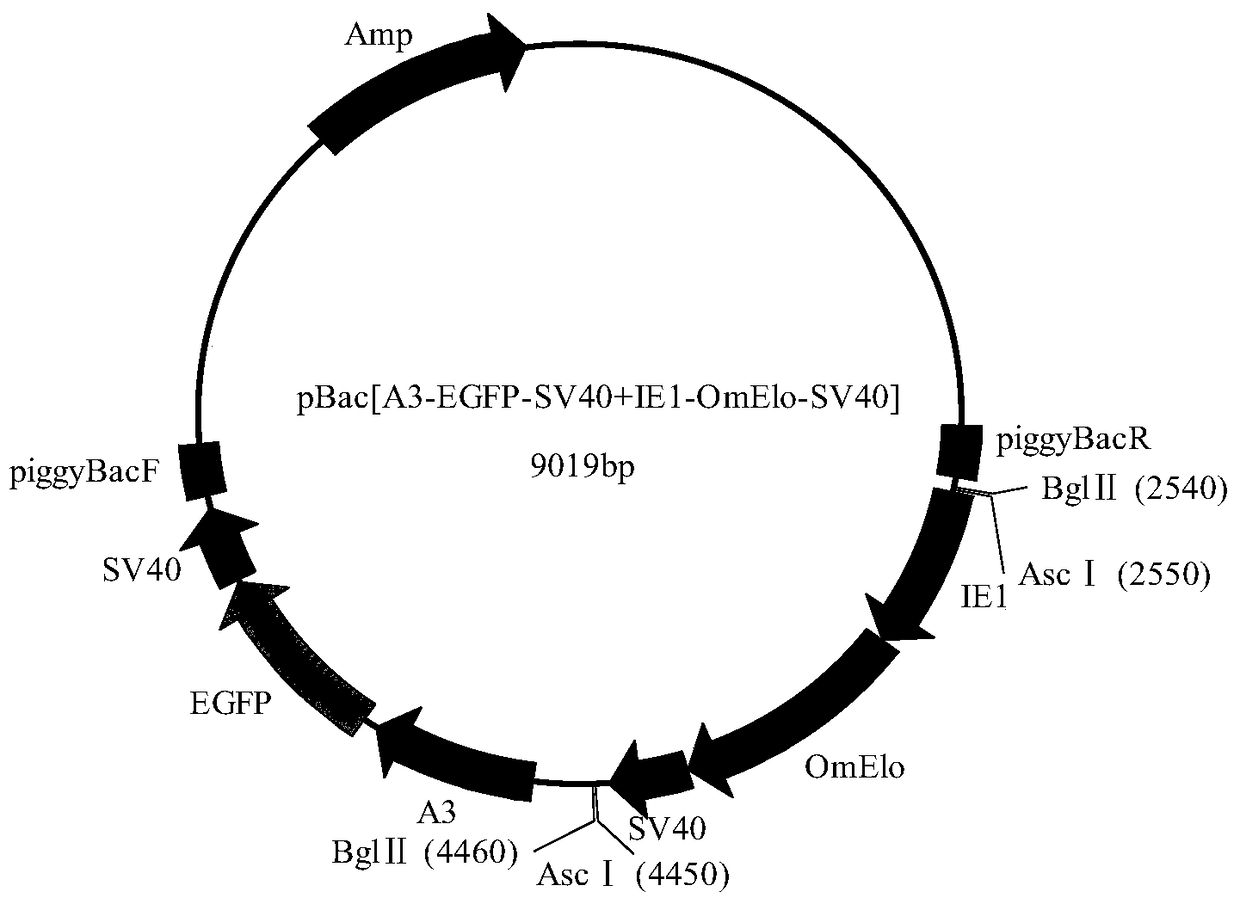Rainbow trout fatty acid elongase gene, recombinant expression vector, application
A technology for expression vector and gene, applied in the field of increasing the content of 11,14,17-cis-eicosatrienoic acid in silkworm pupa tissue, and can solve the problems of increasing the content of unsaturated fatty acid in silkworm tissue and the like
- Summary
- Abstract
- Description
- Claims
- Application Information
AI Technical Summary
Problems solved by technology
Method used
Image
Examples
Embodiment 1
[0031] Preparation of rainbow trout fatty acid elongase gene OmElo.
[0032] Source gene: fatty acid elongase gene (OmElo) sequence of rainbow trout (NCBI accession number: NP_001118108.1).
[0033] According to the codon preference of the coding gene expression sequence in the silkworm genome sequence data, the source gene was optimized and designed, and the rainbow trout fatty acid elongase gene OmElo was obtained after optimization. The nucleotide sequence is shown in SEQ ID No.1, named OmElo Gene.
[0034] The amino acid sequence of the protein encoded by the OmElo gene is shown in SEQ ID No.2.
Embodiment 2
[0036] The silkworm transgenic recombinant vector pBac[A3-EGFP+IE1-OmElo-SV40] was constructed.
[0037] Such as figure 2 As shown, the intermediate vector obtained by inserting the OmElo gene into the multiple cloning site of the starting vector pSL1180, and then inserting the complete expression cassette IE1-OmElo-SV40 containing the OmElo gene into the final vector pBac[A3-EGFP] for recombinant expression carrier.
[0038] Specific implementation operations:
[0039] Step S1, preparation of vector pSL1180[Ser1-OmElo-SV40]
[0040] The OmElo gene was connected to the pUC57 vector plasmid; the pUC57 vector plasmid was digested by BamHI / NotⅠ double enzymes, and the OmElo gene fragment was recovered (the recovery operation was carried out according to the instructions of the TAKARA gel recovery (small amount) kit), and the recovered fragment was digested with the same enzyme The backbone fragment of the pSL1180[Ser1-pGH-SV40] vector was ligated according to the instructions...
Embodiment 3
[0058] Breeding of silkworm transgenic lines with rainbow trout fatty acid elongase gene (OmElo).
[0059] Using the commercially polyvalent silkworm line 305 as the raw material, the parental silkworm eggs were reared on normal mulberry leaves and mated with moths to lay eggs.
[0060] Take 10nL~15nL of the recombinant vector pBac[A3-EGFP+IE1-OmELo-Sv40] prepared in Example 1 with a concentration of 400ng / μL and the mixture of the helper plasmid pHA3PIG to form a mixture, and inject the mixture into 400 capsules Silkworm eggs laid by female moths of silkworm strain 305 for 2 hours to 6 hours were sealed with non-toxic glue and placed in an environment of 25° C. and 85% relative humidity to accelerate hatching. After hatching, 98 G0 generation ant silkworms were obtained from the pBac[A3-EGFP+IE1-OmElo-SV40] vector.
[0061] The obtained ant silkworms are fed with mulberry leaves until moths become moths, and the obtained silkworms are backcrossed or selfed. Obtain 33 moth c...
PUM
 Login to View More
Login to View More Abstract
Description
Claims
Application Information
 Login to View More
Login to View More - R&D Engineer
- R&D Manager
- IP Professional
- Industry Leading Data Capabilities
- Powerful AI technology
- Patent DNA Extraction
Browse by: Latest US Patents, China's latest patents, Technical Efficacy Thesaurus, Application Domain, Technology Topic, Popular Technical Reports.
© 2024 PatSnap. All rights reserved.Legal|Privacy policy|Modern Slavery Act Transparency Statement|Sitemap|About US| Contact US: help@patsnap.com










